Grotta Romanelli is an important archaeological and fossil site of the Italian Paleolithic as it preserves traces of the passage of prehistoric man from 120.000 to about 8.000 BC through numerous archaeological and paleontological finds, human burials, wall and furniture art. Located in an inlet on the Salento coast, near Castro in the province of Lecce, about 7 meters above sea level, it is made up of a single room 16 meters wide, 35 meters deep with a tunnel 8 meters long, facing east on the Adriatic, with the vault partially collapsed in an unspecified period.
The layer that has offered the most evidence is that of the so-called "brown lands", dated to the Upper Paleolithic, with the remains of 2 skeletons of children and some jaws, materials conserved in the Museum of Anthropology of the Federico II University of Naples.
Furthermore, it is precisely in this layer that about 200 artifacts of movable art were found on pieces of equid bone and on blocks of limestone, with various signs and figures that refer to a symbolic type of production. Only 111 of these are catalogued, only one fragment is painted in ocher with a comb-shaped motif, while all the other 110 are engraved, some with deeper and wider strokes and others with thinner and more superficial strokes. They have been grouped into three main categories: zoomorphic figures (9 images, including two cattle, a deer, a feline, a wild boar and 4 images of quadrupeds that are difficult to interpret), geometric figures and others with abstract designs that are not exactly identifiable. The designs are more or less complex, with parallel lines of various widths, with a broken pattern or overlapping one another, with reticulated, zig-zag or meandering, snake-like or ribbon-like decorations.
Also referable to the same stratum are around 10.000 lithic artifacts (scrapers, burins, blades, lamellas with retouching) with typical local characteristics that have determined the definition of "Romanellian", a typical industry of the end of the Upper Paleolithic (final Epigravettian).
But of particular importance are the wall engravings, many of which were discovered in 1905, in a period of particular ferment for the Upper Paleolithic in Europe, when many caves with rock engravings in France and Spain came to light.
Among these, noteworthy is the bovine figure placed on the north wall of the cave, which according to Gian Alberto Blanc "… analogously to what is so frequently observed in the Aurignacian graffiti of the caves of south-western Europe, it is limited to one part, and precisely to the anterior-superior one. It is sketched with great confidence and remarkable naturalism. The shape of the head and the horns recalls the Aurochs or Bos Primigenius, whose remains abound in the brown earth layers of the Cave. The figure is crossed, from top to bottom, at the withers, by a long straight section with teeth at the lower end, which recalls the so-called harpoons which so frequently appear on the animal figures of the Palaeolithic deposits of Western Europe…” (GA Blanc, 1928).
Another important graffiti is that of the "deer found"; following a photographic survey made with a particular shooting technique (carried out in 2000 by Ninì Ciccarese of the Salentino Speleological Group) the superimposed image of a previously unpublished graffitied ox of fine workmanship emerged.
Many other graffiti have been identified on the walls of Grotta Romanelli, especially in the area near the entrance, some meters above the modern ground level; they are linear and fusiform models, some of which probably represent vulvas and anthropomorphic. In particular there is one figure that has been identified with a Gonnersdorf-style silhouette. It is an engraved panel located in a dark area of the cave, hardly reached by the sun's rays, located after the entrance to the cave on the right; the panel includes some bovids along with schematic markings that have yet to be interpreted. Above a bovine figure there is a small anthropomorphic profile placed in profile, about 2 cm. in height, with the upper part of the body suggested by the natural shape of the rock, while the lower part is accurately engraved. The figure has the buttocks protruding backwards and the legs and torso protruding forward; the legs have no knees and end in a point while the upper limbs are totally absent. This figure has been compared with the known female representations of the Lalinde-Gonnersdorf type, widespread in various sites of Western and Central Europe of the Final Paleolithic, from Cantabria to Moravia, Ukraine and Poland, in furniture and wall art finds, in single representations or multiple, in the form of all-round figurines or even pendants.
More similarities have been identified with the engravings discovered in some sites in southwestern France such as Lalinde, Le Courbet (this is also engraved on the wall), Fontales and Pestillac. The new discovery strengthens the hypothesis advanced by Margherita Mussi and Daniela Zampetti on the presence of other anthropomorphic engravings of about 20 cm. high, located at the entrance to the cave that strongly recall the Gonnersdorf style.
In October 2021 they were published in the magazine “Antiquity” the results of the investigations inside Grotta Romanelli, with the discovery of new wall engravings, about 31 new graphic units, including the figure of a bovid, a rare depiction of a boreal penguin and some geometric and linear signs, which emerged during the recent excavation campaign started in 2016 and coordinated by professor Raffaele Sardella of the Department of Earth Sciences of the Sapienza University of Rome. The fieldwork was concentrated in the inner chamber of the cave, in two previously unexplored areas, labeled with GRP002 and GRP005.
Area GRP002 has a single panel of engraved art, called A, measuring 58 cm. for 61 in height, located at about 4.20 m above the zero level, i.e. above the lowest point of the floor of the cave (at about 7 m above sea level); the panel has a grid-like reticulated pattern.
In area GRP005, around 10 panels have instead been identified, of which only 3 (panels E, F and H) present a rich concentration of graphic signs of wall art, around 30 individual figures with zoomorphic and geometric motifs. In particular, panel F is the most interesting, with the representation of the head and back of a bovid with the horns stretched forward and with the representation of an ornithomorphic figure, the northern penguin, with the head, beak and one eye ; both images are crossed by engraved lines of different trends. It should be noted that the particular shape of the rock near the bovid creates a three-dimensional effect outlining the animal's body. These new finds at Romanelli show probable stylistic connections with other examples of Paleolithic art from the Franco-Cantabrian area (Niaux, Lascaux, Font-de-Gaume, Cosquer, El Pendo Cave), demonstrating the high mobility during the Upper Paleolithic in a large area of Eurasia.
Of particular importance on the panel called E is a winding figure that develops around a vertical axis (a figure already identified in the French caves) and a spindle-shaped one which refers to other similar ones already found inside the cave (see the spindle-shaped female silhouette engraved on the south wall of the cave). The investigations carried out made it possible to find the use of four different engraving techniques and signs of application directly with the fingers on the rock of a natural pigment known as "moon milk".
Also during these recent excavation activities new chronological data were obtained through radiocarbon analysis of the sediments, with confirmation of human occupation of the cave between 11.000 and 14.000 years ago, during which "a graphic palimpsest was created which records various episodes artistic and the possibility of older chronologies” (D. Sigari et al., 2021), the latter still to be investigated.
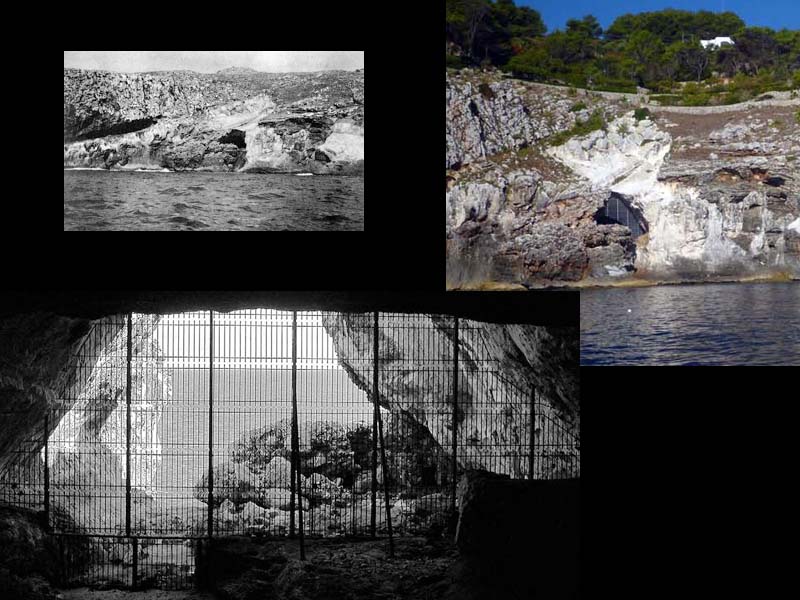
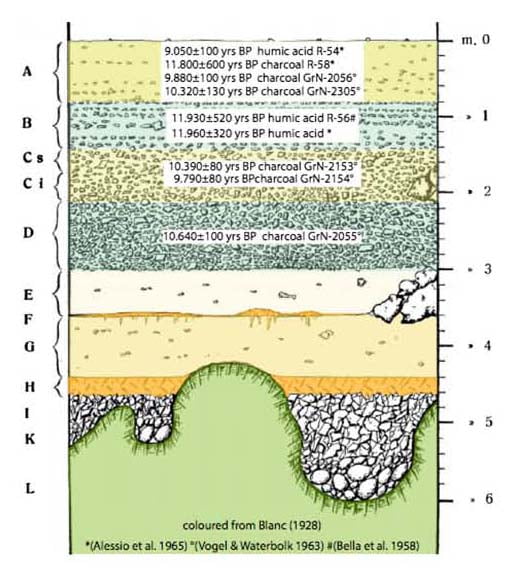

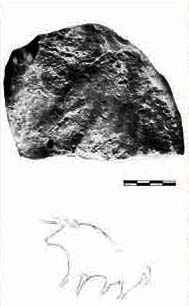
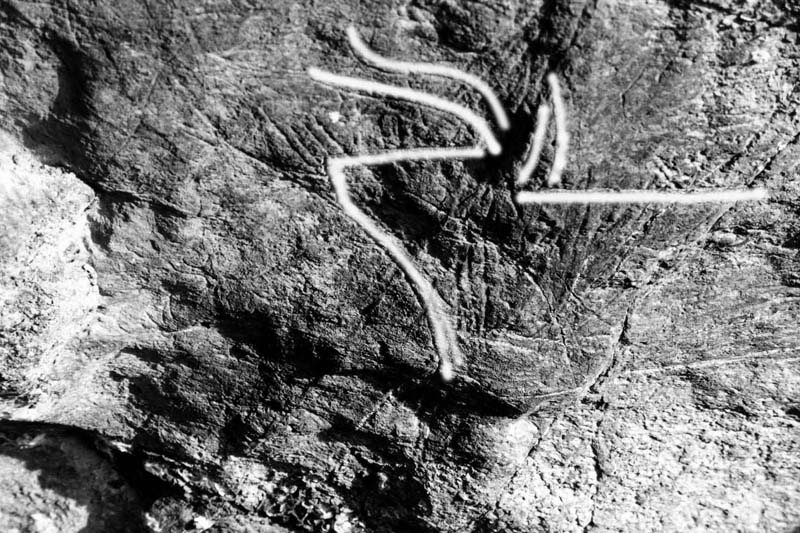
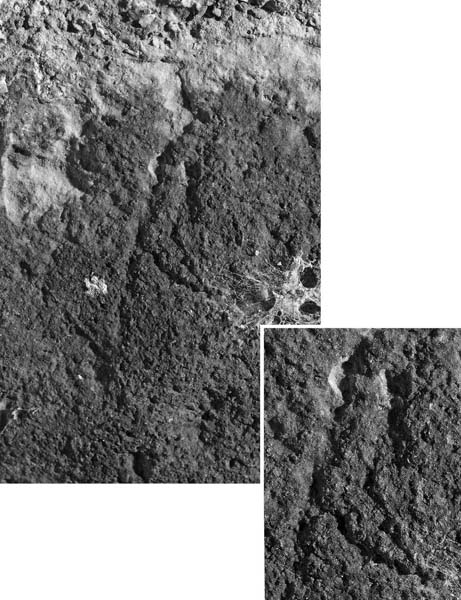


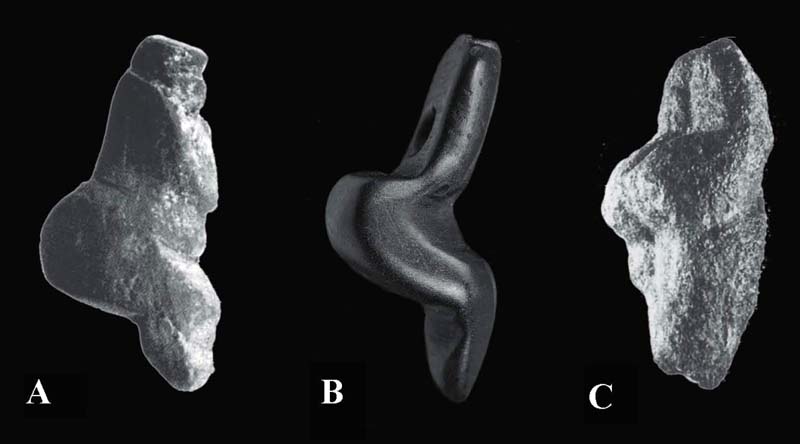
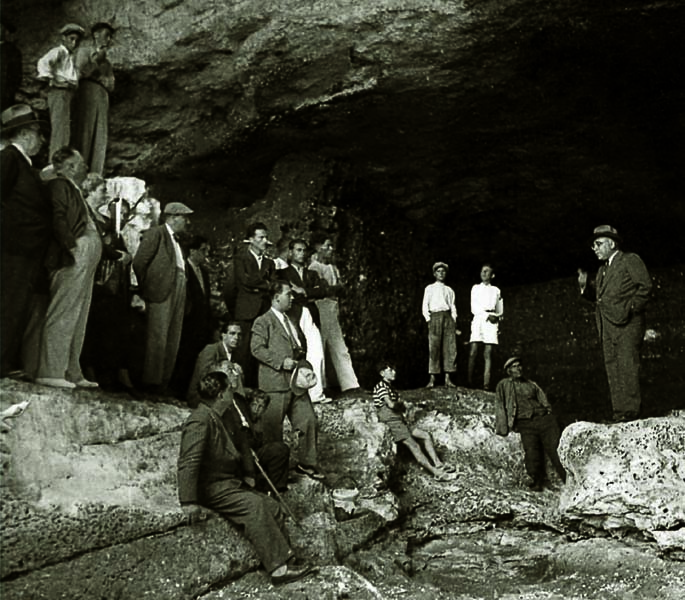
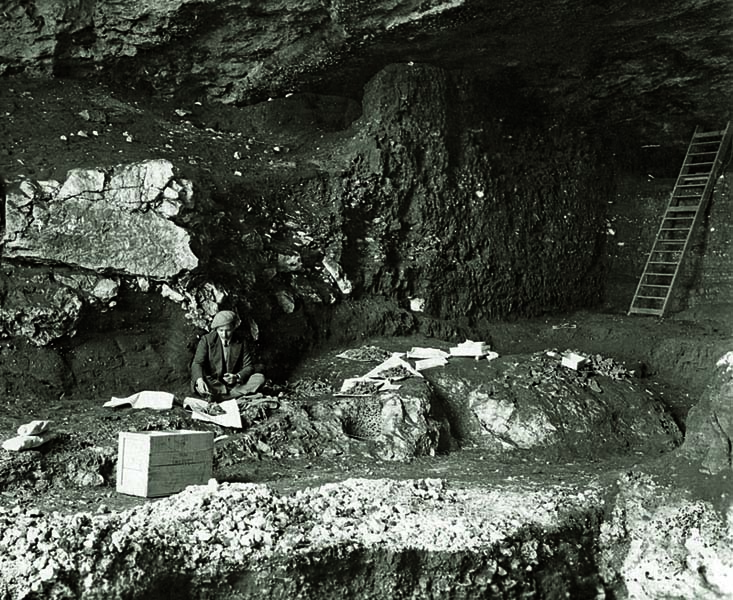
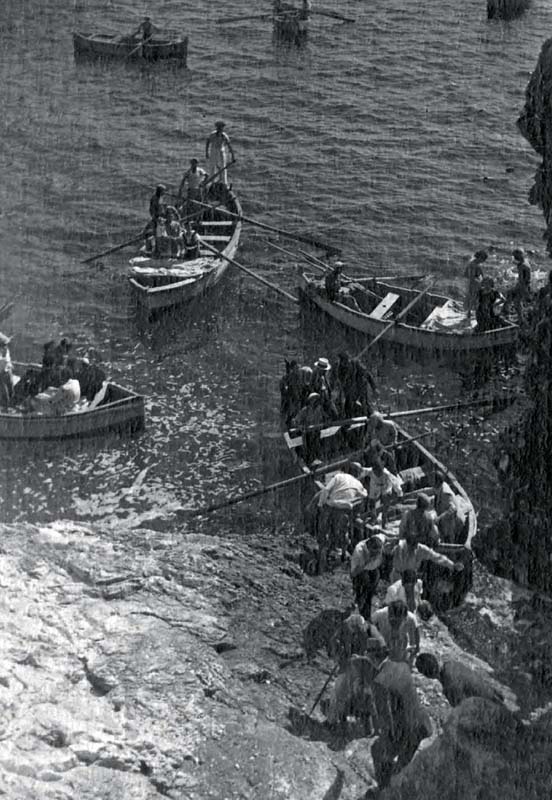
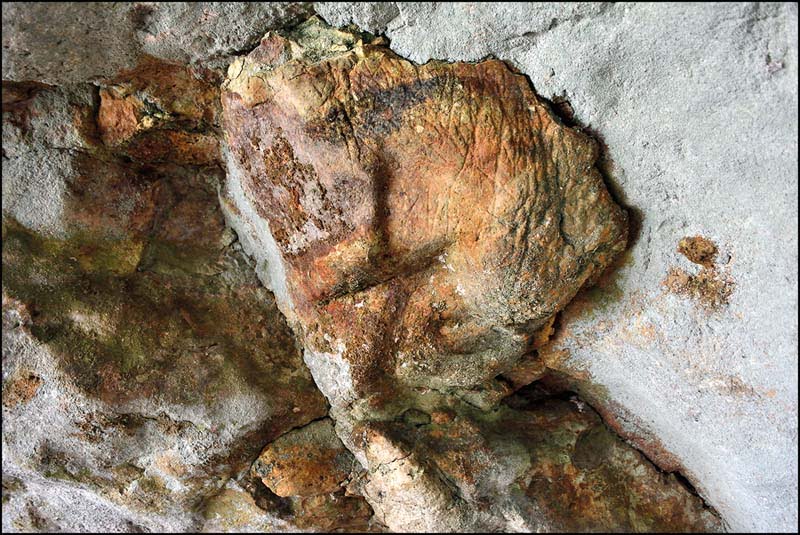
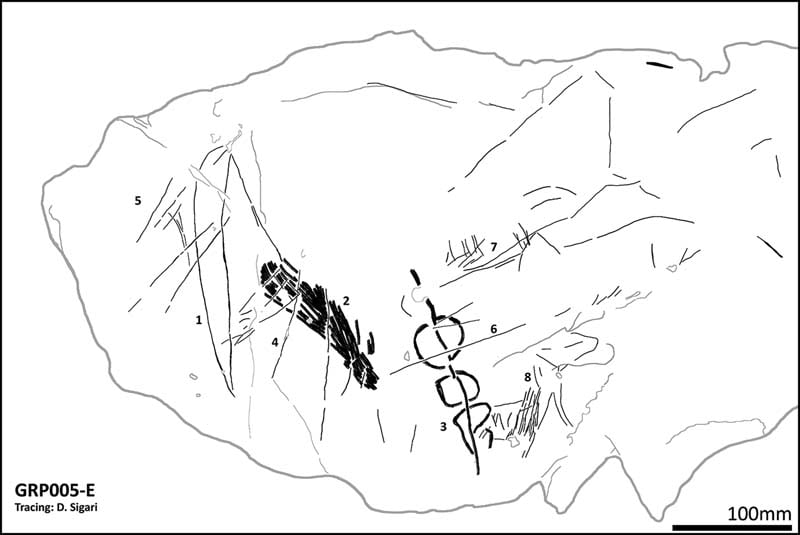
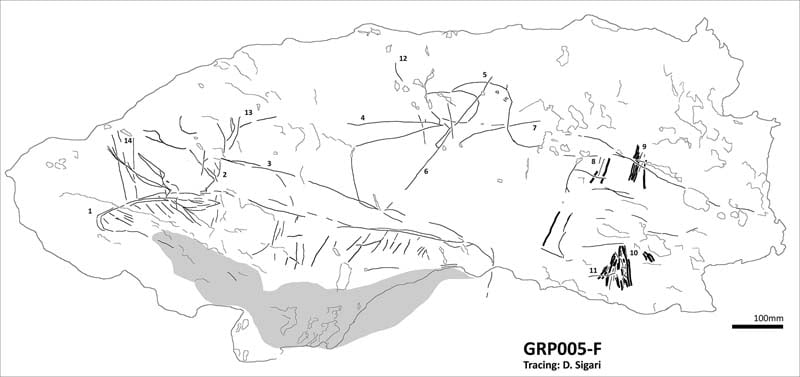
Historical notes
The discovery of Grotta Romanelli is linked to the indirect action of the Tuscan Ulderigo Botti who, passionate about Salento geology, after an excursion to Capo di Leuca in 1869 and following fossil finds hypothesized the presence of prehistoric man there since remote. But it was only in the early 900s that systematic research began which led to the discovery of the cave: it was 1904 when an appreciated painter from Salento, Paolo Emilio Stasi, fascinated by Botti's findings, began to scour the area together with Ettore Regalia, paleontologist and anthropologist, until to the discovery of fossils, engraved bone objects and the graffiti of a bovid (bos primigenius) on the north wall of the cave, all elements that allowed the Upper Paleolithic to be recognized for the first time in Italy. The echo of these finds aroused a heated debate in Italy, above all because Luigi Pigorini, a well-known Italian paleontological archaeologist, was skeptical with this dating, attributing the site to the most recent Neolithic, despite the fact that among the finds there were no traces of pottery shards typical of Neolithic stations; he concluded the debate by writing that “…nothing Paleolithic had come out of the Romanelli Cave…”. Fortunately, in 1914 the superintendency of excavations in Puglia gave the task to Baron Gian Alberto Blanc, pioneer of paleontological studies in Italy, to carry out a systematic exploration of the site of Romanelli, which he did, despite the interruption of the two wars , collecting and analyzing all the data present in the deposit until it was established that the cave, contrary to Pigorini's assertion, was a site of extraordinary importance for the study of the Paleolithic in our country. Blanc reconstructed, through a complex stratigraphy, the different phases of human life inside the cave, representing, in the early 900s, the first certified Italian testimony of Upper Palaeolithic and rock art in the Mediterranean Europe area. The stratigraphy of the site has been divided as follows:
- an upper layer called "terre brune" with 5 levels composed of a rich fauna and about 10000 finds of lithic industry from the Upper Paleolithic (levels AE for a total height of over 3,50 m) attributed to the so-called Romanellian (style that takes name from the cave, referring to the final Epigravettian) and dated between 12.000 and 8.000 BC Levels C and D include the finds of wall and furniture art treated in this file;
- a thin stalagmite layer defined as level F (about 5 cm.) which corresponds to the rather sudden transition between warm and cold fauna, dated to about 40.000 years ago; this layer represents the passage between two distinct worlds, the lower one characterized by the presence of the Neanderthal man and by a fauna typical of a warm and humid climate and the upper one characterized by the presence of the Sapiens man and by a fauna typical of a cold and arid climate ;
- a lower complex called "red earth" (layer G of about 60-80 cm.) with about 1100 limestone artifacts and fauna referable to the Middle Paleolithic (Mousterian), i.e. to a chronological period ranging from 67.000 to 40.000 BC; numerous traces of human activity and hearths with coals and ashes were found in this layer as well as fossils of large vertebrates such as wolves, rhinos, cervids, hippopotamuses and elephants;
- a second stalagmite layer (level H of about 20 cm.), dated to about 69.000 years ago;
- a layer of ossiferous breccia (level I of about 1 metre); in this layer a red ocher pebble was found together with some limestone tools and traces of hearths which all together represent the indication of the first occupation of the cave by man;
- a deposit of Tyrrhenian beach (level K of about 60 cm.).
After decades of in-depth research coordinated by Blanc, with the contribution of eminent researchers such as Abbot Henri Breuil, Hugo Obermaier, Alberto Carlo Blanc (son of Gian Alberto who continued the excavations until the 60s), Paolo Graziosi and Paolo Cassoli, in 60s the excavation activities were entrusted to other eminent scholars, including L. Cardini of the Italian Institute of Human Paleontology (IsIPU) with the support of the Salento Speleological Group and the participation of Marcello Piperno, Italo Biddittu, Gianluigi Carancini, Francesco Cassoli and Mariella Taschini, investigations that lasted until the early 70s when all research activities inside the cave ceased. After about 40 years of inactivity, in 2015 the research activities coordinated by the University of Rome La Sapienza resumed, with the authorization of the Superintendency for Archaeological Heritage of Puglia. The new studies, carried out by a multidisciplinary team made up of prehistoric archaeological researchers, paleontologists and geologists, have investigated the previously identified layers with a more modern approach and through the use of new technologies such as to allow a more precise and in-depth dating; in particular, the levels of the "red earth" were investigated, which have backdated the chronological interval of the deposit of the cave to more than one hundred thousand years. Furthermore, since 2015 a complete topographic survey of the cave has been carried out, with the production of a 3D graphic model of all the morphology, including the chromatic details of the excavation areas and petroglyphs. And it is with these studies that we have come to the discovery of important finds of exquisite workmanship that have meant that the Romanelli Cave leapt into the news as a key site of the Paleolithic in Europe.
CARD
LATEST PUBLISHED TEXTS
VISIT THE FACTSHEETS BY OBJECT

